In This Issue
The opinions, beliefs and viewpoints expressed in this publication are those of the authors. They do not necessarily reflect the opinions, beliefs, viewpoints or official policies of Autism Society Alberta.
|
|
|
ASA's Family Resource Centres
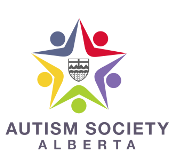
 How can we help you? Did you know… ASA’s Family Resource Centres are a pan-disability service? This means that we are ready to assist Alberta families who have family members with any type of disability. How can we help you? Did you know… ASA’s Family Resource Centres are a pan-disability service? This means that we are ready to assist Alberta families who have family members with any type of disability.
How do we assist you? Our Family Resource Centres provide a range of services and supports that focus on strengthening parenting and caregiving knowledge, social support, coping and problem-solving skills, access to community supports and resources, improving child and adult development, building resiliency, and fostering well-being. This includes:
- Goal-setting, planning and implementation of services under a Family Managed Service Agreement (PDD or FSCD), and navigation of the FSCD and PDD programs.
 Connecting families with their peer network of other families to share lived experiences and find a local community. Connecting families with their peer network of other families to share lived experiences and find a local community.- Support families and FMS administrators to find, hire, orientate, and provide required training to staff who will work directly with individuals and families.
- Resources and workshops. Workshops will be on subjects like Abuse Prevention & Response, New Diagnosis, Non-Violent Crisis Intervention, Behavioural Supports, Transition to Adulthood, and more.
- Virtual parent support group meetings twice each month.
Reach Out to a Family Resource Centre Near You!
Fort McMurray and the Regional Municipality of Wood Buffalo
Email: FRCfortmcmurray@autismalberta.ca
Ph#780-215-2459
St. Paul and Lakeland area
Email: FRCstpaul@autismalberta.ca
Ph# 780-646-7310
Calgary and the surrounding area
Email: FRCcalgary@autismalberta.ca
Ph# 825-407-8683
Crowsnest Pass and Pincher Creek areas
Email: FRCcrowsnest@autismalberta.ca
Ph# 403-564-0082
Lethbridge and surrounding area
Email: FRClethbridge@autismalberta.ca
Ph# 825-399-0699
Medicine Hat and surrounding area
Email: FRCmedicinehat@autismalberta.ca
Ph# 587-554-3142
If there is no Family Resource Centre in your area, we have All-Alberta Virtual Support. Email FRCAllAlberta@autismalberta.ca or phone 587-495-2237 or 403-747-0310.
|
|
|
End article-->
Upcoming FRC Support Groups and Workshops

Wednesday, November 10, 7pm
LGBTQ+ Autistic Adult support group
Wednesday, November 10, 7pm
Virtual Parent Support Group
Monday, November 15, 6pm
Abuse Protocol
Tuesday, November 16, 6pm
Autism 101

Thursday, November 18, 6pm
FMS Recruiting
Monday, November 22, 6pm
Abuse Protocol
Tuesday, November 23, 1:30pm
Virtual Parent Support Group
Tuesday, November 23, 6pm
Autism 101
Thursday, November 25, 6pm
FMS Basic Financials
Monday, November 29, 6pm
Abuse Protocol
Tuesday, November 30, 6pm
Autism 101
For details and to see the most up-to-date calendar, visit the Family Resource Centres section of Autism Alberta's web site.
|
|
|
End article-->
Building Community for Your Family Member
Kitty Parlby
We all want our loved ones to be part of their community. And each time that happens, it can enable friendship, recreation, volunteerism, hobbies, health, employment, and happiness. Those connections are priceless! Yet it can be a little more challenging to facilitate this for our children or adults with developmental disabilities.
I have been honing my skills at doing this for my son Eric for 20 years. Eric is autistic and has an intellectual delay. He was non-verbal and 5 years old when I started working on community-building. In a couple of weeks, he’ll turn 25, and speaks hesitantly in short sentences and phrases.
 Eric has a terrific relationship with Matt at our local EB Games. Every two weeks we go in, and Eric gives Matt some pictures he put together and printed out, with his ideas or wish list for what characters he’d like to see in future games and battles. Matt can speak the ‘game language’ with Eric, and is infinitely patient. During these visits, I hear way more words from Eric than he usually initiates. Eric has a terrific relationship with Matt at our local EB Games. Every two weeks we go in, and Eric gives Matt some pictures he put together and printed out, with his ideas or wish list for what characters he’d like to see in future games and battles. Matt can speak the ‘game language’ with Eric, and is infinitely patient. During these visits, I hear way more words from Eric than he usually initiates.
When he was young, everything was more challenging. He had multiple meltdowns daily, and I knew much less about autism than I do now. My main strategy at the beginning was to just get him out there. I took Eric everywhere, and seldom let fear of a meltdown stop me. I was open and responsive to anyone showing concern or curiosity. I did not easily take offence, as offence was usually not meant. In fact, it was much more often a lack of knowledge or misunderstanding that caused those passing by to address me. I took every opportunity as a friendly teaching moment – a chance to tell them something about Eric and autism.
As he got older, his aides in school would encourage other students to join Eric in fun activities, or ask them to help Eric with a task. In our immediate community, we took Eric to dinners at the community hall, did volunteer work together as a family, and signed him up for Beavers and Cubs. In high school, Eric became well known for his ‘air-fives’ (high fives without touching). He had a blend of a few mainstream classes and the LAWS (Life, Academic and Work Skills) class. He also did tasks that had him interacting with many of the school staff.
Throughout his teen years and into adulthood, I made a special effort to learn the names of people we saw on a regular basis at businesses, libraries, and recreation facilities. I facilitated friendly interactions between Eric and anyone who showed an interest in him, which got easier once he got a little better at communicating verbally. He qualifies for PDD funding, and has a community aide that takes him to a variety of places within an hour of home, where there are even more opportunities to be part of the wider community.
At our nearest Costco, he had a wonderful relationship with a staff member named Colleen for about three years. They somehow started a contest of who could surprise the other before being seen. So Eric would stealthily sneak down the adjacent aisle, peek through the racks to see where she was, and then run around to the bread aisle and yell 'SURPRISE!' But sometimes Colleen would catch Eric a little later while bringing more bread from the back; a point for each surprise, the leader winning the day. Unfortunately, Colleen has recently left that job, but many of the Costco staff know Eric, and go out of their way to speak with him.
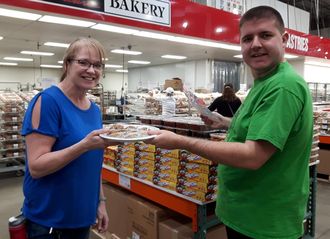 So how did all this end up enriching Eric’s life? There are quite a few places we go where some of the staff know him by name, giving more natural occasions for him to communicate. His many years of exposure to community have evolved into real-life opportunities for work experience, volunteer work, and occasionally short-term paying jobs. He has done a large variety of tasks over the years now, increasing his skills, and therefore his prospects for the future. Also, years of sharing our journey through my Autism Inspirations Facebook page have resulted in people recognizing Eric in public (even in other parts of the province). They often greet us, saying kind, positive words to Eric. So how did all this end up enriching Eric’s life? There are quite a few places we go where some of the staff know him by name, giving more natural occasions for him to communicate. His many years of exposure to community have evolved into real-life opportunities for work experience, volunteer work, and occasionally short-term paying jobs. He has done a large variety of tasks over the years now, increasing his skills, and therefore his prospects for the future. Also, years of sharing our journey through my Autism Inspirations Facebook page have resulted in people recognizing Eric in public (even in other parts of the province). They often greet us, saying kind, positive words to Eric.
The benefits of getting out into the community with your loved one may or may not be evident in the short term, but there is a cumulative value. Now, many years later, it plays a big part in developing a happy, safe, productive life for our son. Just last week, a customer in a store asked, “Are you Eric?”, and spoke to us for a bit. A few minutes after that, Eric looked at me and said, “I’m famous!”
Kitty Parlby is the mother of an autistic young adult. She is a former special needs Educational Assistant and an autism speaker and consultant with Autism Inspirations. She currently works as a Family Resource Coordinator for Autism Society Alberta.
|
|
|
Myths and Media
Nicole Burnett
Autism Spectrum Disorders (ASD) have really only been in the public eye in recent years. Thus, there is a great deal of misunderstanding that remains about what ASD is, how it affects people, and where it comes from. In today’s entry, I’d like to address some popular myths and discuss how the media influences the narrative. After reading, I encourage you to be bold and strike up a conversation with someone you know about one of these myths and have a conversation. It takes active effort to foster ASD understanding and acceptance.
Myth: All people with ASD excel in math, art, or music.
 Fact: People with ASD can have fixed interests and dive deep into understanding a topic they love. These fixed interests may make it appear that these individuals excel in a specific area. Well, they probably do, but not because they are a savant. IQ (Intelligence Quotient) variability is the same for people with ASD as those without. Less than 1% of individuals with ASD are also savants. Fact: People with ASD can have fixed interests and dive deep into understanding a topic they love. These fixed interests may make it appear that these individuals excel in a specific area. Well, they probably do, but not because they are a savant. IQ (Intelligence Quotient) variability is the same for people with ASD as those without. Less than 1% of individuals with ASD are also savants.
Myth: Children with ASD will grow out of it.
Fact: Nope. While usually diagnosed in childhood, ASD children become ASD adults. ASD is a neurodevelopmental condition, meaning it is biologically based.
Myth: ASD individuals do not experience empathy.
Fact: This myth comes from a false research claim that ASD individuals don’t have something called Theory of Mind (the ability to take someone else’s perspective). This research claim has been retracted, but the myth remains. ASD individuals experience all emotions, but may display them differently than neurotypicals. In fact, some research indicates that ASD individuals may experience social emotions such as empathy more intensely than neurotypicals.
Myth: There is an autism epidemic.
Fact: It is true that the diagnostic rate of ASD has increased from 1 in every 168 children (2008) to 1 in every 52 children (2018). However, this is not an epidemic. Diagnostic rates are influenced by changing diagnostic criteria and an increased understanding of ASD due to advances in research. Thus, the diagnostic rates of ASD are more inclusive, which also means there were diagnostic gaps in previous decades. This also explains why there is currently a drastic increase in adults receiving a diagnosis – they were missed due to a lack of knowledge when they were children.
Myth: Autism is caused by vaccines.
Fact: NO. Can we just move on from this one now? Sadly, a research paper published in 1998 by Dr. Andrew Wakefield made a claim that autism was caused by the MMR vaccine. It was later discovered that his research was fabricated. He has since lost his credentials, and the paper has been retracted, but the misinformation had already spread. The CDC spent roughly $10 billion dollars and 15 years researching any possible link between vaccines and autism and found no relationship.
The influence of the media
Where do these myths come from, and why do they remain? The majority of the public does not have formal education in neurodevelopmental disorders. They learn about these disorders by what they see on TV, movies, and social media. While there has been an increase in the number of characters with ASD portrayed on TV and in the movies, these characters are very stereotypical. Consider the example of the movie Rain Man.This was one of the first movies with an autistic character, and he was portrayed as a savant. While savantism is the exception to the rule, this is what the general public learns about ASD.
 Social media and TV have also been used as a platform for celebrities’ agendas. For example, actress Jenny McCarthy was an anti-vaccine proponent, and was given time on major news outlets and Oprah to share her story. Unfortunately, her story fueled misinformation that vaccines cause ASD. She made false claims that her son became autistic after becoming ill from a vaccine, but it turned out that her son does not have autism at all! She quietly left the spotlight and never retracted her claims. However, her words had damaging effects, and left thousands of parents with feelings of guilt over their ASD children, and created fear in others about the possible harm of vaccines. Social media and TV have also been used as a platform for celebrities’ agendas. For example, actress Jenny McCarthy was an anti-vaccine proponent, and was given time on major news outlets and Oprah to share her story. Unfortunately, her story fueled misinformation that vaccines cause ASD. She made false claims that her son became autistic after becoming ill from a vaccine, but it turned out that her son does not have autism at all! She quietly left the spotlight and never retracted her claims. However, her words had damaging effects, and left thousands of parents with feelings of guilt over their ASD children, and created fear in others about the possible harm of vaccines.
Media is a powerful source of information for many people. While more TV shows feature ASD characters and perhaps claim that this is good for ASD awareness, more care needs to be taken in portraying the diversity of the ASD community.
Dr. Nicole Burnett is a cognitive scientist and is currently a psychology professor at Medicine Hat College.
|
|
|
Autism Edmonton is Hiring!

Autism Edmonton is looking to hire a Respite Care Aide (or Occasio Social Architect). This role will provide front line services to community members, particularly children and youth with Autism.
Autism Edmonton’s Occasio Program is designed to allow children and youth diagnosed as being on the Autism Spectrum to become comfortable with themselves, people of their age, and the world around them. It also facilitates learning the necessary skills to be able to function in our society with confidence as an independent being. Respite Care Aides (or Occasio Social Architects) are the front line workers of this program, and are in direct contact with the participants. They are responsible for facilitating social and life skill opportunities for program participants, as well as creating a safe and enjoyable environment.
Click here to learn more
|
|
|
End article-->
Functions of Behaviour
Carmen Moore
This month I will begin to highlight the EBP (evidence-based practice) of establishing the ‘function of behaviour’. This is such an important strategy to understand and highlight, as the function of behaviour, or more simply why the person is doing what they are doing, ultimately helps establish a more successful response or strategy. This is a foundational understanding when trying to support anyone, but especially someone with autism. It can be more difficult for non-verbal people, but there are many other ways to communicate the ‘why’ of a certain action as well.
When we talk about deciphering the function or ‘why’ of a behaviour, it is important to define what the word ‘behaviour’ means. Shane Lynch tells us that “Behaviour is anything and everything: every observable action by a person is behaviour.” However, “observations do not provide an  explanation of the behaviour”. Lynch warns the observer to remain objective when observing, and emphasizes the importance of ruling out any medical or biologically-based behaviours. explanation of the behaviour”. Lynch warns the observer to remain objective when observing, and emphasizes the importance of ruling out any medical or biologically-based behaviours.
Lynch goes on to explain that behaviour occurs for one of two reasons: the student is either trying to get something or trying to avoid something. If we can keep this in mind, and try to target what the person is getting or avoiding, then we have a better chance at making changes to adverse behaviours. For example, the person may be trying to get attention/reactions, items, activities, automatic reinforcement, or sensory stimulation. In terms of avoiding, the person may be trying to avoid work, sensory overload, transitions, social situations, or unwanted sensory stimulation.
I read an article recently about some students at a school who were having issues each spring that seemed out of character for them. Winter would be no problem, but as the weather warmed up and the students lost their heavy winter jackets, hats, mittens and boots, there seemed to be new behaviour problems. Once the parents and school personnel realized that the students had been benefitting from the sensory input of the tighter heavier winter clothes, and enjoying the positive pressure that had been providing, it was easier to come up with more appropriate solutions. If one did not realize it was sensory-related, it would have been much harder to support them. This would not have been my first thought, so this information is very helpful when trying to see situations through a new and helpful lens.
If we do not determine the reason or function behind the behaviour, we may end up trying different strategies or interventions that are not going to make any difference at all. For example, if a child is throwing a tantrum at the grocery store each time, it could be because they are hungry for a treat, want your undivided attention, are tired (if it’s always right before naptime), find the smell of raw meat undesirable, just don’t like doing the work of unloading the groceries afterwards, or dislike having to stop their play or other desired activity to go and get the groceries. Each reason could be legitimate, but figuring out the ‘why’ will aid in overcoming the difficult response.
Trying different strategies to address the wrong reason can make their responses more intense, or cause more harm than good. This is like taking a shot in the near dark and hoping for the best. Research supports this, as we read that “Furthermore, random selection of an intervention can result in a lengthy process of trial and error, which may negatively impact a learner's educational process and social interactions, or may serve to strengthen problem behaviours.” (AIM module.)
The overriding goal of all educational or behavioural interventions is to increase an individual's skills in order to help him or her function independently in a variety of environments.
Functional behavioural assessment (FBA) is much more than a procedure; it is a process and a way of thinking. FBA can assist teachers, parents and caregivers, by determining when, where and why. This should lead to a smoother and more independent situation for the learner.
 For example, if someone is trying to avoid some work that they are required (and able) to do, such as putting away their laundry, they may try things like changing the subject, procrastinating, starting other preferred activities, etc. If you provide a highly desired tangible item (something the person really enjoys but has no regular access to) as a reward if they put away their laundry, you may have a better chance of that happening (achieving the desired outcome or behaviour). The learner may really want positive social interaction, compliments, high fives, smiles, or other reinforcers to help them get the work/task done. By providing that during and after, you may also get a better outcome. Try to consider what the learner will want to get or avoid in order to guide your next response. Remember: figuring out the why will get you closer to determining a more successful ‘now what’ solution to the issue. For example, if someone is trying to avoid some work that they are required (and able) to do, such as putting away their laundry, they may try things like changing the subject, procrastinating, starting other preferred activities, etc. If you provide a highly desired tangible item (something the person really enjoys but has no regular access to) as a reward if they put away their laundry, you may have a better chance of that happening (achieving the desired outcome or behaviour). The learner may really want positive social interaction, compliments, high fives, smiles, or other reinforcers to help them get the work/task done. By providing that during and after, you may also get a better outcome. Try to consider what the learner will want to get or avoid in order to guide your next response. Remember: figuring out the why will get you closer to determining a more successful ‘now what’ solution to the issue.
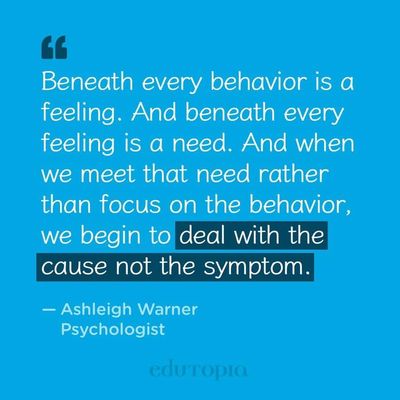
|
|
|
Acceptance Versus Expectations
Karla Power
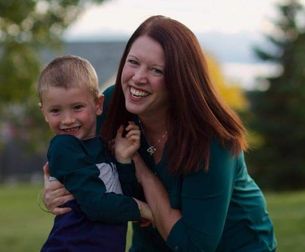 I have been struggling lately with a very interesting dichotomy: the acceptance of my children versus the expectations that I have for them. I have been struggling lately with a very interesting dichotomy: the acceptance of my children versus the expectations that I have for them.
On one hand, I am a very strong advocate for autism acceptance and letting people be themselves. If they need to stim, let them; if they want you to repeat the same phonics video six times in a row, why not?; and if they want you to play in an unconventional way, go for it!
I have grown a lot in my acceptance, and always try to embrace my own children’s, as well as my students', uniqueness. I don’t particularly care if everyone can sit still in my classroom, or participate in the same way as their peers: if they are there, they are still learning! As for my own children, I have become accustomed to their peculiar ways, and understand what they need and want most of the time, so what we are doing seems to be working.
The flipside of that is the expectations that I have for my students and kids. I pride myself on being a teacher who is not only flexible, but also firm and fair. I am willing to make accommodations, but I have expectations, as well. Being a music teacher gives me the unique  advantage of teaching students for several years in a row. I am able to watch them grow, learn, and reach their goals throughout the years. For some of my students, the expectation is to just remain in the room for 30 minutes. For others, I expect them to try the same activities that their peers are doing. Even taking attendance looks different for everyone: some of my students use their devices to say “here”, others use their words, and some give me a high five, a wave, or eye contact. advantage of teaching students for several years in a row. I am able to watch them grow, learn, and reach their goals throughout the years. For some of my students, the expectation is to just remain in the room for 30 minutes. For others, I expect them to try the same activities that their peers are doing. Even taking attendance looks different for everyone: some of my students use their devices to say “here”, others use their words, and some give me a high five, a wave, or eye contact.
For my own children, I also have expectations, or let’s call them hopes and dreams. The biggest hope is that they will both learn to talk someday. That is why we still continue speech therapy, are trying to implement various forms of communication with the boys, and expose them to language all the time.
I also hope that they will learn enough life skills (dressing, feeding, safety, potty training) to be independent as children, and dream that they will someday get jobs, have meaningful relationships and be able to live independently as young men. I know the boys are very capable, and I want them to reach their full potential, just like any parent.
For every hope and dream that I have for the boys, I also have worries that they will not get there, and guilt for putting those expectations on them. I mean, doesn’t autism acceptance mean accepting them for who they are?
 So this is my struggle: I accept my children and their differences, but I still want the best life for them. I feel that most parents of typical children have hopes and dreams for their kids, so I choose to have them, too, even though my hopes and dreams may look a bit different. So instead of looking at it as acceptance versus expectations, perhaps I need to have acceptance and expectations. Maybe the dichotomy I am struggling with needs to be looked at as two viewpoints with the same goal: my boys living their best life! So this is my struggle: I accept my children and their differences, but I still want the best life for them. I feel that most parents of typical children have hopes and dreams for their kids, so I choose to have them, too, even though my hopes and dreams may look a bit different. So instead of looking at it as acceptance versus expectations, perhaps I need to have acceptance and expectations. Maybe the dichotomy I am struggling with needs to be looked at as two viewpoints with the same goal: my boys living their best life!
|
|
|
Children’s Autism Services of Edmonton Speaker Series
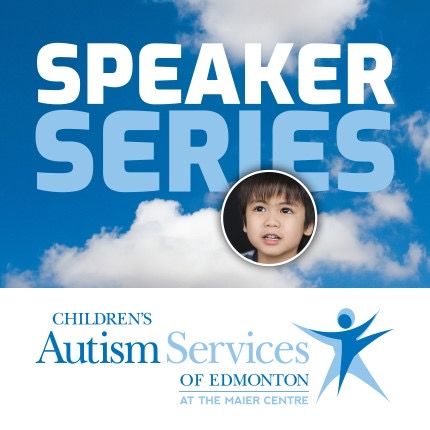
Children’s Autism Services of Edmonton is pleased to announce the next installment of their Speaker Series taking place on Monday, November 15th, 2021.
Join them virtually as they continue to showcase a number of engaging local and international speakers each month. You will be able to access the Speaker Series from anywhere and get the chance to connect with speakers and other like-minded individuals. Webcast speaker videos will be available for one week after the live event.
More information, including reserving a virtual seat, can be found at www.caseconf.ca
|
|
|
End article-->
More Than Just Books – Tapping into Your Local Library’s Resources
Maureen Bennie

From the Autism Awareness Centre Inc. Blog:
Libraries are at the heart of communities. I feel grateful for our local library and all that they have to offer. Over the years, they have provided my two autistic children (now adults) with fantastic programs, work experience and a chance to discover all kinds of books and DVDs on a huge variety of topics. My daughter found her speaking voice through a library program called Story PALS where she read aloud to a dog once a week. My son became an avid reader during his high school years after having an incredible two-year work experience program at the library, a program which gave him regular exposure to books, and taught him how they are  categorized and grouped. He reads aloud to himself for at least 3 hours throughout the day, 7 days a week. categorized and grouped. He reads aloud to himself for at least 3 hours throughout the day, 7 days a week.
The library provides free access to all, and offers many different services that you may not even know about. While services may vary from branch to branch or from urban to rural settings, librarians are there to help you find the answers to your questions and make recommendations.
Let’s have a look at some of things a library can offer.
Accessibility
Most libraries in urban and town centers are located on a public transportation route, so they can be accessed even if a person doesn’t drive.
There are free home delivery services for patrons with mobility challenges. A mobility challenge is defined as an illness, injury or disability that prevents a person from visiting the library, carrying library materials, or from leaving their home for a period of three months or longer. A home delivery service brings any circulating materials the library has available for loan right to your home.
A print disability is one that prevents or inhibits a person from reading conventional print. This can be because of a:
- learning disability
- physical disability, such as the inability to hold or manipulate a book
- visual disability, such as an impairment of sight or the inability to focus or move one’s eyes
Resources to support a print disability can be found through the Centre for Equitable Library Access (CELA). CELA is Canada’s comprehensive accessible reading service, providing books and other materials to Canadians with print disabilities in the formats of their choice in both  English and French. They partner with member public libraries, offering a digital-only service for books, magazines and newspapers. CELA has a great blog with regularly updated content. English and French. They partner with member public libraries, offering a digital-only service for books, magazines and newspapers. CELA has a great blog with regularly updated content.
CELA has an Educator Access Program for K-12 and post-secondary educators who support students with print disabilities. To access the program, you have to have a library card from a CELA member library. CELA also offers regular webinar training on how to access what they have to offer. Their webinars also cover accessible reading technologies used by library patrons with print disabilities, including screen magnification, text to speech, braille displays, literacy support software, and accessible reading apps for mobile devices.
Many libraries also belong to the National Network for Equitable Library Service (NNELS). They are a repository of content owned and sustained by Canadian public libraries. They work with international partners, libraries, readers, and publishers (particularly Canadian ones) to make copies of books in accessible formats available to readers in Canada who have print disabilities. Did you know that about 10% of Canadians may have a print disability, which limits people’s ability to read in a traditional print format? Here is the list of participating libraries in this program.
Some libraries offer Special Services Cards for patrons with additional needs. This type of library card offers extended borrowing privileges. My children have this type of card, which allows them to borrow materials for 6 weeks, rather than just the standard 21 days, which isn’t always enough time to explore or read the materials. Ask a librarian about this type of card.
Public Spaces
Many library branches have public meeting spaces that you can reserve with your library card. Ranging from 10 to 50 people or more, these spaces are great for team meetings, activities, or group study.
The Vancouver Public Library has something called Inspiration Lab, dedicated to digital creativity, collaboration and storytelling. Options include:
 Recording – record professional quality audio and video Recording – record professional quality audio and video
Digitize – convert photographs, audio cassettes, and video tapes into digital formats
Creating – edit images, audio tracks, and video clips or publish your own e-book
What a great opportunity to use professional equipment to create something digital without the expense of having to buy or rent the equipment or find a studio – and all accessible with a library card. Ask about digital space options at your local library.
Programs and Events
The library offers a wide range of programs and events suitable to different ages and catering to many interests. You can find book clubs, activities, stitching groups, author readings, technology training, career help, music concerts, storytime, games, writer-in-residence programs, and so much more! Since COVID-19 began, many of these programs have moved online, so it doesn’t matter where your home branch is in a city.
Digital Libraries
Libraries subscribe to thousands of online books, audiobooks, magazine and newspaper articles, indexes, and other recreational and research resources. You can also stream movies, documentaries and TV shows or listen to music. For more information, visit your local library's web site.
Unusual Things to Borrow
Your library may have more than just reading material and digital downloads to borrow. At some branches, you can book computers, iPads, PENPals, video game consoles, or musical instruments. Ask your branch about their loan options for non-book items.
 Libraries are one of the great equal opportunity organizations, offering services, programs, and materials for free. Having open access to learning resources, removing barriers, and offering additional support where it is needed allows for more people to expand their interests, enrich and enhance their lives. Check with your local library about changes to services during COVID-19 to avoid disappointment. I also want to note that while I wrote this post based on the offerings at Canadian libraries, many libraries in other countries will have similar offerings and programs under different names. Libraries are one of the great equal opportunity organizations, offering services, programs, and materials for free. Having open access to learning resources, removing barriers, and offering additional support where it is needed allows for more people to expand their interests, enrich and enhance their lives. Check with your local library about changes to services during COVID-19 to avoid disappointment. I also want to note that while I wrote this post based on the offerings at Canadian libraries, many libraries in other countries will have similar offerings and programs under different names.
|
|
|
|
|